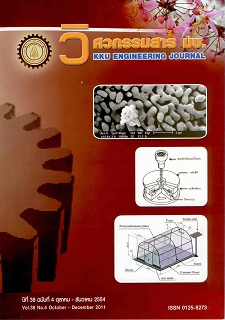Activity Based Costing of Product Life Cycle in The Design Process for Plastic Calendaring and Coating Industry
Main Article Content
Abstract
Activity Based Costing (ABC) which has become an important aspect of manufacturing organizations can be defined as a methodology that measures the cost and performance of activities, resources and cost drivers. The objective of this paper is to illustrate an application of ABC method and to compare the results of ABC with traditional costing methods, for the calendaring and coating processes in plastic industry. It can be considered as a Product Life Cycle (PLC) to ABC systems. PLC was studied in two phases, the Acquisition and the Production Phases. Three products (product C, product F, and product L) were used in the study. In the Acquisition Phase, the highest mixed cost of 80.93% for newly designed product was mainly from product and process validation activity. This included the 22.64% counted from the sub-activity for evaluating the measurement systems. In the Operation Phase, the cost of production activity was higher than that of the original product by 57%. The highest mix of activity cost was 10.90% from the production activity center, where the 5.90% was calculated from the sub-activity for embossing. The monthly total cost of PLC is 454 baht per meter. The first one is product L (660 baht per meter). The second one is product C (438 baht per meter).The last one is F (265 baht per meter). When comparing the total cost of all the products over the product life cycle and their selling price, the total cost was 6% greater than the selling price. The highest mix of activity costs was 13.30% from the raw material preparing activity center. The product C, the proportion of total cost of PLC was over selling price of 57.91%.
Article Details
How to Cite
Khemthong, A., & Kingphadung, K. (2012). Activity Based Costing of Product Life Cycle in The Design Process for Plastic Calendaring and Coating Industry. Engineering and Applied Science Research, 38(4), 411–420. retrieved from https://ph01.tci-thaijo.org/index.php/easr/article/view/1679
Issue
Section
ORIGINAL RESEARCH
This work is licensed under a Creative Commons Attribution-NonCommercial-NoDerivatives 4.0 International License.



